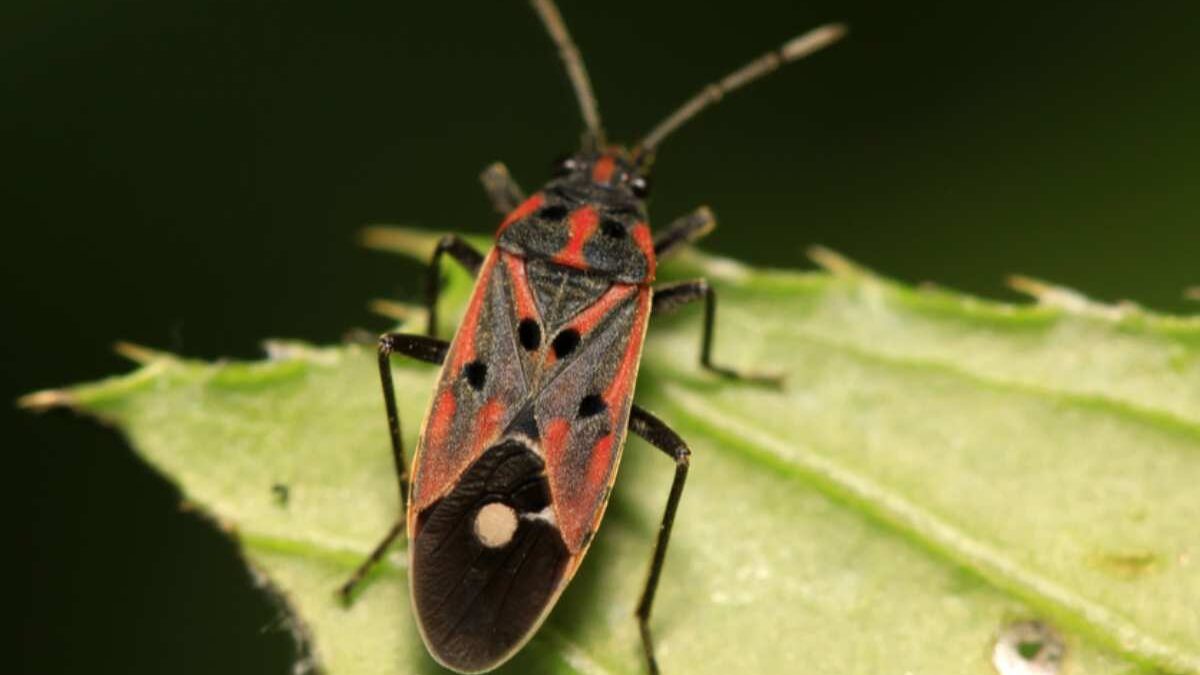When it comes to maintaining a healthy, beautiful lawn, one of the biggest challenges faced by homeowners is dealing with pests. Lawn bugs can cause significant damage to your grass and plants, resulting in unsightly brown patches and even the death of your beloved greenery.
But did you know that not all bugs are bad for your lawn? Some insects can help keep your lawn healthy by preying on harmful pests. In this guide, we’ll take a closer look at the different types of lawn bugs and how to identify them.
Let’s dive in!
Table of Contents
Chinch Bugs
These tiny black and white insects feed on grass blades, sucking out juices and causing yellow or brown patches to form on your lawn. To identify these lawn bugs, look for small red or orange spots on their wings. They also have a distinctive white band across their backs.
Grab a can and fill it with soapy water if you suspect an infestation. Then, cut out the bottom of the can and place it in the affected area of your lawn. If chinch bugs are present, they will float to the surface within a few minutes.
Grubs
Grubs are the larvae of various types of beetles and feed on grass roots, causing considerable damage to your lawn. They have a white, C-shaped body with six legs near their head and a brown head capsule.
You can dig up a small section of your lawn to identify grubs and look for them in the soil. If you find more than 5-7 grubs per square foot, they are likely causing significant damage to your grass. Dealing with bugs in this category is best handled with professional pest control services, as they can be challenging to get rid of on your own.
Armyworms
These garden pests get their name from their methodical movement, which resembles soldiers marching in a line. They feed on grass blades and tend to cause severe damage in large numbers.
To identify armyworms, look for small, brown, or green caterpillars with dark heads. They are most active at night and tend to hide in the thatch of your lawn during the day.
Aphids
Aphids are small, soft-bodied insects that suck sap from grass and plants. They are usually green but also black, red, or yellow. While they can damage plants, they attract beneficial lawn insects like ladybugs.
To identify aphids, look for small, pear-shaped insects with long antennae. They also have tiny protrusions known as cornicles on their backs. If you notice aphids on your lawn, taking action quickly before they cause significant damage is best.
Dealing With Different Types of Lawn Bugs
By understanding the different types of lawn bugs, their characteristics, and their effects on your lawn, you can make informed decisions on how to deal with them. Remember, not all bugs are bad for your lawn, so it is essential to identify the pests before taking any action.
Inspecting your lawn and implementing proper pest control measures can help you maintain a healthy lawn you can be proud of. So watch for these lawn bugs and take the necessary steps to keep them at bay.
For more informative articles, check out the rest of our website!

